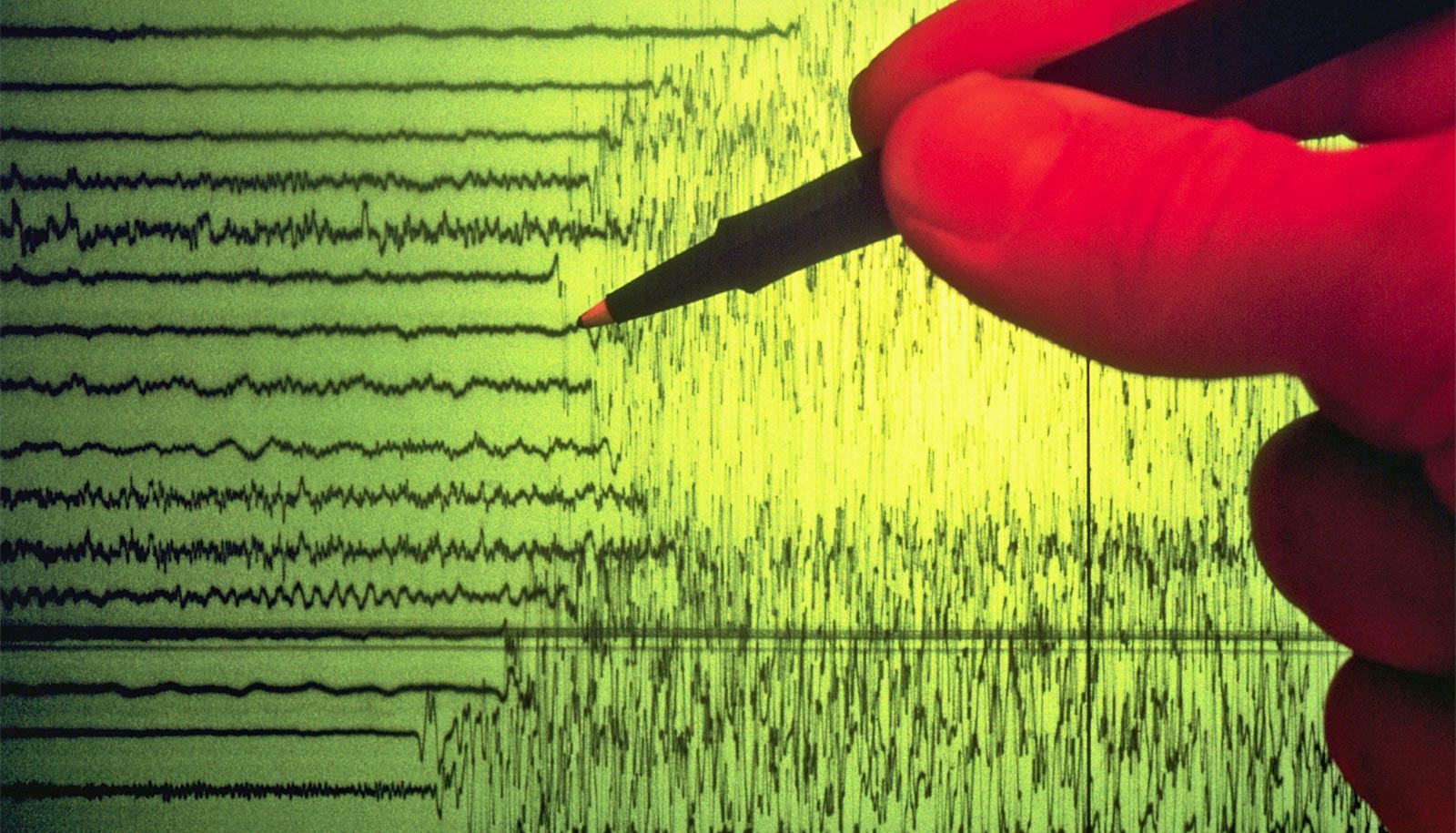A tracker borrowed from stock traders can help detect the gradual movement of tectonic plates—what are called “slow slip” earthquakes.
These movements do not unleash damaging amounts of seismic energy, but scientists are just beginning to understand how they may be linked to the “big one.”
The new technique can quickly pinpoint slow slips from a single Global Positioning System station. It uses the financial industry’s relative strength index, a measure of how quickly a stock’s price is changing, to detect slow slips within a string of GPS observations.
“I’ve always had an interest in finance, and if you go to any stock ticker website there’s all these different indicators,” says lead author Brendan Crowell, research scientist in earth and space sciences at the University of Washington. “This particular index stood out in its ease of use, but also that it needed no information—like stock volume, volatility, or other terms—besides the single line of data that it analyzes for unusual behavior.”
Slow slips
The study tests the method on more than 200 GPS stations that recorded slow slips between 2005 and 2016 along the Cascadia fault zone, which runs from northern California up to northern Vancouver Island.
“Looking at the Cascadia Subduction Zone—which is the most-studied slow slip area in the world—was a good way to validate the methodology,” Crowell says.
The results show that this simple technique’s estimates for the size, duration, and travel distance for major slow slip events match the results of more exhaustive analyses of observations along the fault.
Discovered in the early 2000s, slow slips are a type of silent earthquake in which two plates slip harmlessly past one another over weeks or months. In Cascadia the slipping runs backward from the typical motion along the fault. A slow slip slightly increases the chance of a larger earthquake. It also may be providing clues, which scientists don’t yet know how to decipher, to what is happening in the physics at the plate boundary.
Regular earthquake monitoring relies on seismometers to track the shaking of the ground. That doesn’t work for slow slips, which do not release enough energy to send waves of energy through the Earth’s crust to reach seismometers.
Sensors and pipes
Instead, detection of slow slips relies on GPS data.
“If you don’t have much seismic energy, you need to measure what’s happening with something else. GPS is directly measuring the displacement of the Earth,” Crowell says.
At GPS stations, the same type of sensors used in smartphones are secured to steel pipes that are cemented at least 35 feet (about 10 meters, or three stories) into solid rock. By minimizing the noise, these stations can detect millimeter-scale changes in position at the surface, which can be used to infer movement deep underground.
Why put an earthquake sensor in Minnesota?
Using these data to detect slow slips currently means comparing different GPS stations with complex data processing. But thanks to the efforts of stock traders who want to know quickly whether to buy or sell, the new paper shows that the relative strength index can detect a slow slip from a single one of the 213 GPS stations along the Cascadia Subduction Zone.
The initial success suggests the method could have other geological applications.
“I want to be able to use this for things beyond slow slip,” Crowell says. “We might use the method to look at the seismic effects of groundwater extraction, volcanic inflation and all kinds of other things that we may not be detecting in the GPS data.”
The technique could be applied in places that are not as well studied as the Pacific Northwest, where geologic activity is already being closely monitored.
“This works for stations all over the world—on islands, or areas that are pretty sparsely populated and don’t have a lot of GPS stations,” Crowell says.
The paper appears in the Journal of Geophysical Research: Solid Earth. Coauthors are from Scripps Institution of Oceanography and NASA’s Jet Propulsion Laboratory. NASA and the Gordon and Betty Moore Foundation funded the work.
Source: University of Washington



